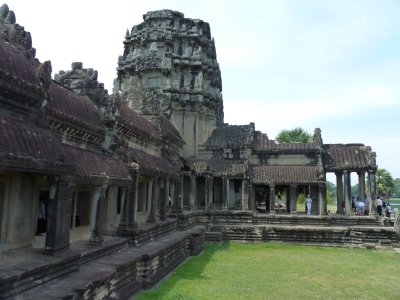
The main approach to Angkor Wat is across a causeway from the right.
Before you get too engrossed this isn't a guidebook to Angkor, just a few miscellaneous thoughts.
In particular we had neither guide nor guide book.
The Angkor area contains Angkor Wat, AngkorThom, and numerous other (significant) temples. We paid US$40 each for a 3 days in 7 pass.
We've split the diary into the three days.
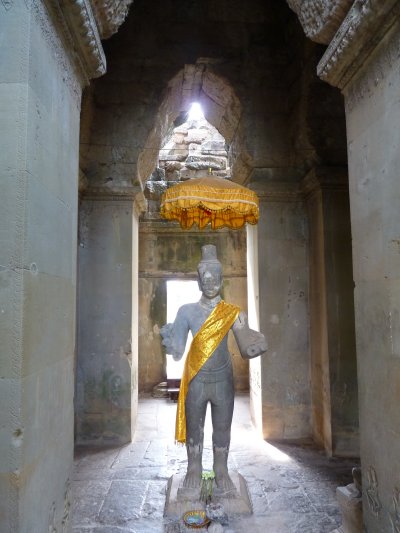
We hadn't previously realised the similarities between Hindi and Buddhism. They seem to be more alike than different in their symbolism. We have only passing knowledge of comparative religion.
Unfortunately neither of us have much of a memory for all the stories associated with either religion or the numerous deities.
Most of the Buddha images we encountered were headless. We couldn't figure out if the heads had been removed and buried or taken in one of the many Thai sackings of the Angkor area.
Important from a Western Christian perspective I guess is what is missing.
There is no clock tower, or bell tower, or any reference to time. Apart from the sequence implied in the bas reliefs.

Technically it has the two main constructs of Khmer temple architecture, galleries and a temple mount.
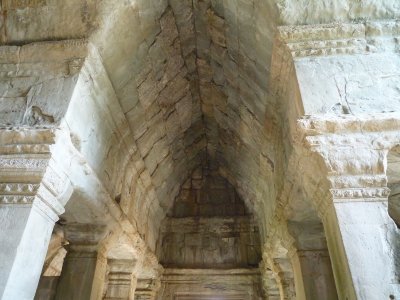
The "rooms" and "corridors" were all quite narrow. The roofs stone.
This roof is a corbelled arch. The stones are laid on top of each other, overlapping a little each layer, until they meet at the top. A bit like what would be built with Lego.
This is very different to an arch (roman or gothic or otherwise) where the stones are angled and follow the arch to a keystone.
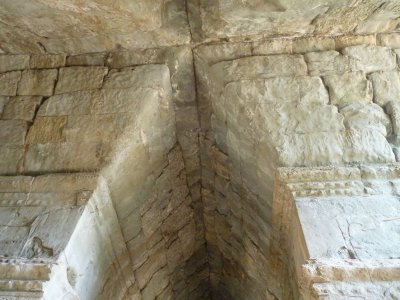
The masonry in Angkor Wat seemed to fit together a bit better than some of the other temples. Either due to the restoration or it was simply better built.
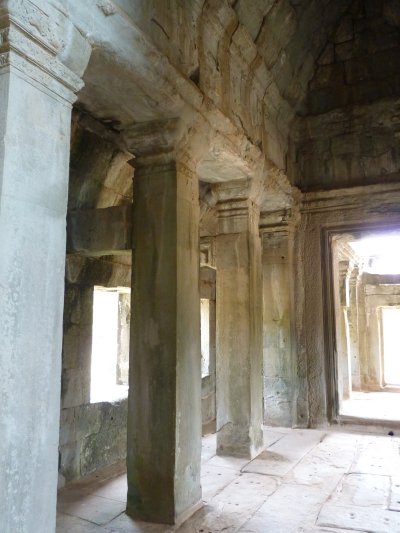
Just as with European cathedrals the walls are supported by other linked walls (buttresses).
Here is the Angkor equivalent, a very narrow support, with a half corbelled arch.
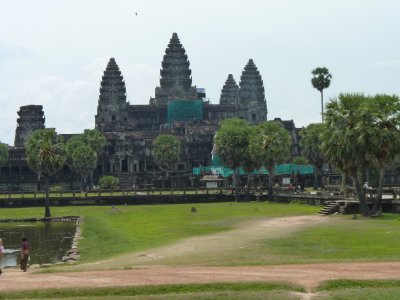
There's a bit of green shade cloth protecting restorations.
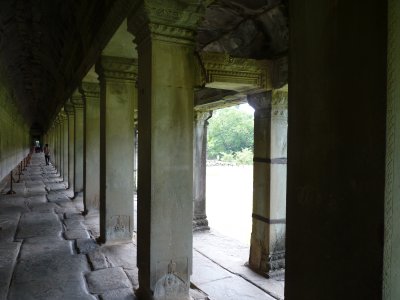
As well as the now familiar corbelled arch and supporting masonry.
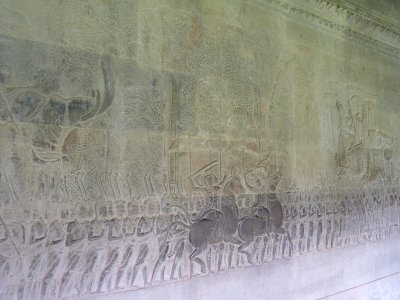
Several hundred meters in all depicting war and general history.
The temple was built in about the 12th century, though we keep getting mixed up with which king did what when.
And even if we knew we would have forgotten by the time we left the temple.
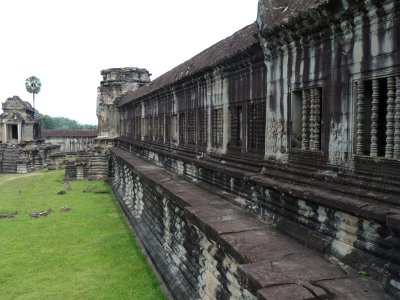
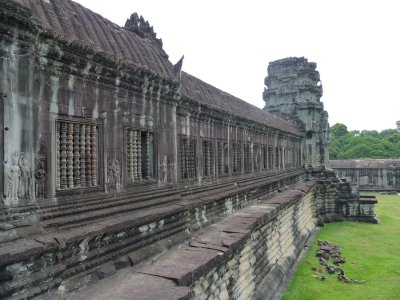
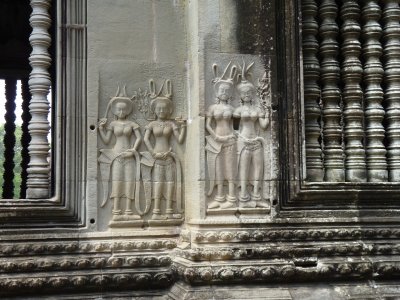
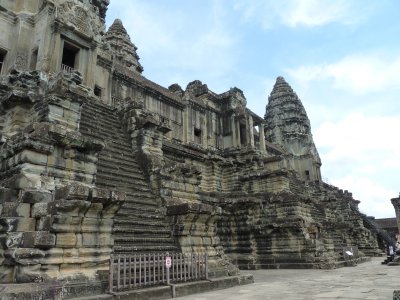
The barriers looked rather permanent but we never did find out.
Haven't a clue what it means but its called the Bakan. It represents Mt Meru. Hindu mythology's home for the Gods.
Originally it would have been the preserve of the high priests (don't you just hate that!).
Hindi gave way to Buddhism in about the 13th century.
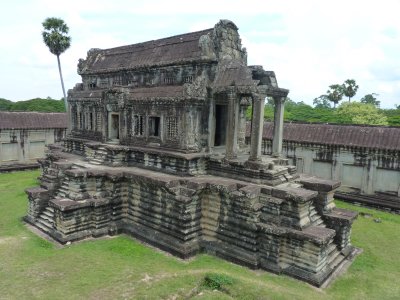
There were a lot of smaller buildings like this within the walls.
It puts my few paltry bookshelves at home (carefully crafted from some exotic timber) to shame.
And there weren't even any books in it.
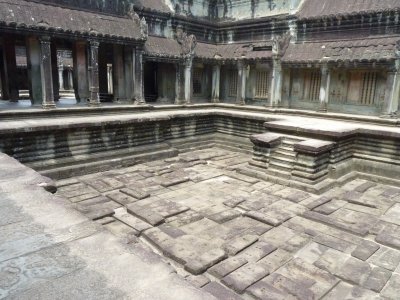
There is occasional reference to special entrances to the temples for royalty (who believed they built and paid for them but as a taxpayer I may have a different view). We couldn't find the purpose of this, or even if it was a bath.
There were four baths like this next to each other.
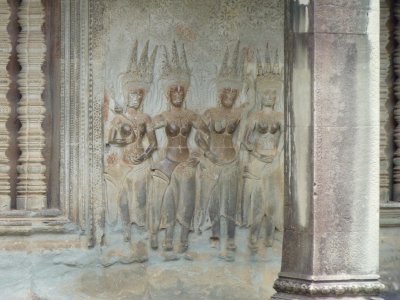
The rest of our thoughts we'll leave to your more than lively imaginations.
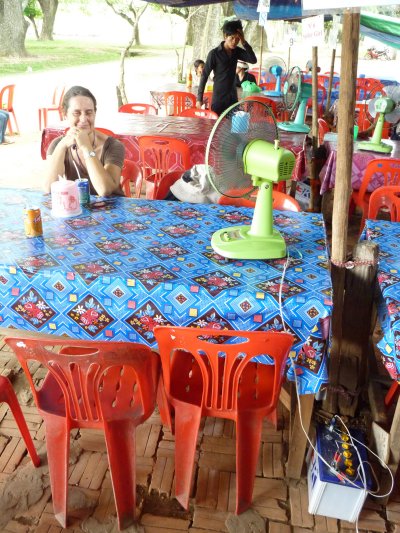
Occasionally the motorhome club discusses 12v fans.
One of the attractions of this particular restaurant was the provision of fans which turned out to be powered from 12v batteries.
A neat solution, but the to and fro action was broken and it played havoc with the contact lenses.
Not the fault of the 12v though (we only have 12v in the Tardis).
The meal from here was one of two in the last month which had an almost instant laxative effect.
The nice thing about the Tardis is it has its own loo. One could describe it as a relief at times. There are some loos around Angkor, but never quite as strategically placed as one's own.
Good news is that so far the digestive system has returned to normal just as rapidly.
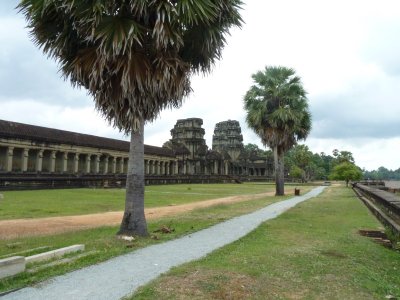
Our photos don't do the temple justice. The Wat is massive. Its impressive in its detail. Its also been well restored or preserved.
Its form and symbolism is also somewhat unusual to us.
The bas relief in the galleries is on a scale we really can't imagine. Even after we've seen it. Like seeing many Bayeux Tapestries end to end and several times wider.
And finally both the architecture and the stonemason's structural techniques intrigued us.
And of course, so little time.